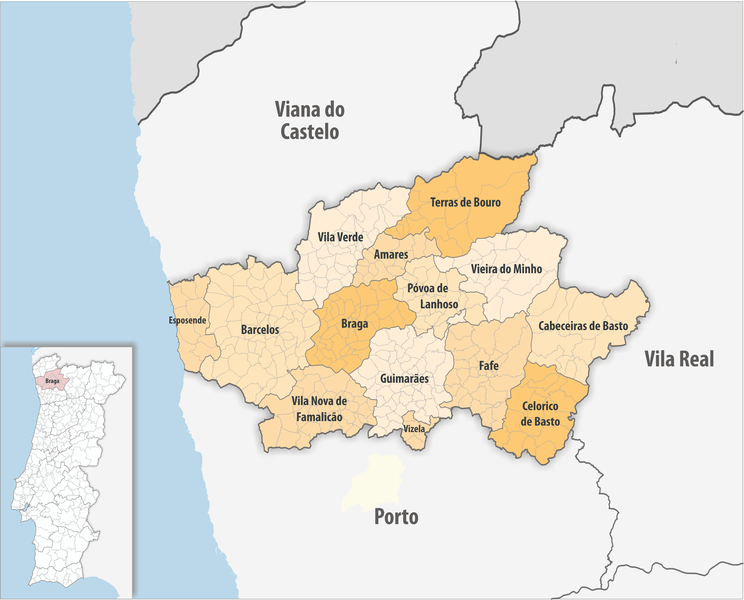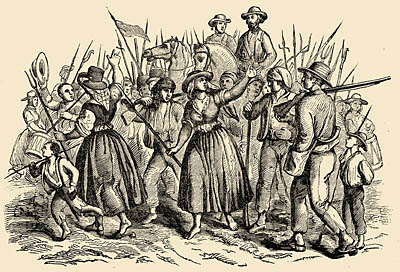|
Fonte Arcada E Oliveira
Fonte Arcada e Oliveira is a '' freguesia'' ("civil parish") in the municipality of Póvoa de Lanhoso, northern Portugal. It was formed in 2013 by the merger of the former parishes Fonte Arcada e Oliveira. The population in 2011 was 1,672,Instituto Nacional de Estatística (INE) Census 2011 results according to the 2013 administrative division of Portugal in an area of 11.06 km². The village Fonte Arcada (also known as ''Fontarcada'') was the birthplace of Maria da Fonte
The Revolution of Maria da Fonte, or Revolution of the Minho, is the name given to a popular revolt in the spring of ...
[...More Info...] [...Related Items...] OR: [Wikipedia] [Google] [Baidu] |
Norte Region, Portugal
The North Region ( pt, Região do Norte ) or Northern Portugal is the most populous region in Portugal, ahead of Lisbon Region, Lisbon, and the third most extensive by area. The region has 3,576,205 inhabitants according to the 2017 census, and its area is with a density of 173 inhabitants per square kilometre. It is one of five Regions of Portugal, regions of Mainland Portugal (Nomenclature of Territorial Units for Statistics, NUTS II subdivisions). Its main population center is the urban area of Porto, with about one million inhabitants; it includes a larger political metropolitan region with 1.8 million, and an urban-metropolitan agglomeration with 2.99 million inhabitants, including Porto and neighboring cities, such as Braga, Guimarães and Póvoa de Varzim. The Commission of Regional Coordination of the North (CCDR-N) is the agency that coordinates environmental policies, land-use planning, cities and the overall development of this region, supporting local governments and ass ... [...More Info...] [...Related Items...] OR: [Wikipedia] [Google] [Baidu] |
Ave (intermunicipal Community)
The Comunidade Intermunicipal do Ave () is an administrative division in Portugal. It was created in 2009. It takes its name from the Ave River. The seat of the intermunicipal community is Guimarães. Ave comprises parts of the former districts of Braga and Vila Real. The population in 2011 was 425,411, in an area of 1,451.31 km². Ave is also a NUTS3 subregion of Norte Region. Since January 2015, the NUTS 3 subregion covers the same area as the intermunicipal community. [...More Info...] [...Related Items...] OR: [Wikipedia] [Google] [Baidu] |
Braga District
The district of Braga ( pt, Distrito de Braga ) is a district in the northwest of Portugal. The district capital is the city of Braga, and it is bordered by the district of Viana do Castelo in the north, Vila Real in the east, Spain ( Galicia) in the northeast and Porto in the south. Its area is and it has a population of 831,368. Municipalities The district comprises 14 municipalities: * Amares * Barcelos * Braga * Cabeceiras de Basto * Celorico de Basto * Esposende * Fafe * Guimarães * Póvoa de Lanhoso * Terras de Bouro * Vieira do Minho * Vila Nova de Famalicão * Vila Verde * Vizela Geography The district of Braga has a very rugged terrain, dominated by high altitudes to the east, close to the Spanish border and the border with the Vila Real district, and going down towards the western coast, cutting through the valleys of several rivers that flow from the north-east to the south-west. The highest altitudes are found in the Serra Amarela (1,361m), on the border wi ... [...More Info...] [...Related Items...] OR: [Wikipedia] [Google] [Baidu] |
Póvoa De Lanhoso
Póvoa de Lanhoso (, ) is a List of municipalities of Portugal, municipality in the district of Braga (district), Braga, Portugal. The population in 2011 was 21,886, in an area of 134.65 km². The present Mayor is Avelino Silva, elected by the Social Democratic Party (Portugal), Social Democratic Party. The municipal holiday is March 19. Parishes The municipality is subdivided into the following 22 parishes: * Águas Santas e Moure * Calvos e Frades * Campos e Louredo * Covelas (Póvoa de Lanhoso), Covelas * Esperança e Brunhais * Ferreiros (Póvoa de Lanhoso), Ferreiros * Fonte Arcada e Oliveira * Galegos (Póvoa de Lanhoso), Galegos * Garfe * Geraz do Minho * Lanhoso * Monsul * Póvoa de Lanhoso (parish), Póvoa de Lanhoso * Rendufinho * Santo Emilião * São João de Rei * Serzedelo (Póvoa de Lanhoso), Serzedelo * Sobradelo da Goma * Taíde * Travassos (parish), Travassos * Verim, Friande e Ajude * Vilela (Póvoa de Lanhoso), Vilela Notable people * Gonçalo Sampaio ... [...More Info...] [...Related Items...] OR: [Wikipedia] [Google] [Baidu] |
Freguesia
''Freguesia'' (), usually translated as "parish" or "civil parish", is the third-level administrative subdivision of Portugal, as defined by the 1976 Constitution. It is also the designation for local government jurisdictions in the former Portuguese overseas territories of Cape Verde and Macau (until 2001). In the past, was also an administrative division of the other Portuguese overseas territories. The ''parroquia'' in the Spanish autonomous communities of Galicia and Asturias is similar to a ''freguesia''. A ''freguesia'' is a subdivision of a ''município'' (municipality). Most often, a parish takes the name of its seat, which is usually the most important (or the single) human agglomeration within its area, which can be a neighbourhood or city district, a group of hamlets, a village, a town or an entire city. In cases where the seat is itself divided into more than one parish, each one takes the name of a landmark within its area or of the patron saint from the usually co ... [...More Info...] [...Related Items...] OR: [Wikipedia] [Google] [Baidu] |
Portugal
Portugal, officially the Portuguese Republic ( pt, República Portuguesa, links=yes ), is a country whose mainland is located on the Iberian Peninsula of Southwestern Europe, and whose territory also includes the Atlantic archipelagos of the Azores and Madeira. It features the westernmost point in continental Europe, and its Iberian portion is bordered to the west and south by the Atlantic Ocean and to the north and east by Spain, the sole country to have a land border with Portugal. Its two archipelagos form two autonomous regions with their own regional governments. Lisbon is the capital and largest city by population. Portugal is the oldest continuously existing nation state on the Iberian Peninsula and one of the oldest in Europe, its territory having been continuously settled, invaded and fought over since prehistoric times. It was inhabited by pre-Celtic and Celtic peoples who had contact with Phoenicians and Ancient Greek traders, it was ruled by the Ro ... [...More Info...] [...Related Items...] OR: [Wikipedia] [Google] [Baidu] |
Diário Da República
The ''Diário da República'' (DR) is the official gazette of Portugal. Between 1869 and 1976, it was called the ''Diário do Governo''. It is published by the National Printing House and comprises two series. Laws, decree-laws, decisions by the Constitutional Court and other relevant texts are published in the I Series. Regulations, public contracts, etc. are published in the II Series. As in many countries, legislative texts are only binding after publication (article 119 of the Portuguese Constitution). Since July 1, 2006, the gazette is published in electronic form, with only a handful of authenticated printed copies (for deposit in the National Archive, the Presidency, the Assembleia da República, the high courts, etc.). There were other changes, such as the end of the III Series. It is possible to buy the printed version of the I Series. ''Diário da República Electrónico'' is the public service of universal and free access. It requires a PDF viewer. Users can searc ... [...More Info...] [...Related Items...] OR: [Wikipedia] [Google] [Baidu] |
Maria Da Fonte
The Revolution of Maria da Fonte, or Revolution of the Minho, is the name given to a popular revolt in the spring of 1846 against the Cartista government of Portugal (presided over by António Bernardo da Costa Cabral, 1st Marquess of Tomar). The revolt resulted from social tensions remaining from the Liberal Wars, exacerbated by great popular discontent generated by new military recruitment laws, fiscal alterations and the prohibition on burials inside churches. It began in the area of Póvoa de Lanhoso (Minho Province, Minho) by a popular uprising that little by little extended to the whole north of Portugal. The instigator of the initial riots was a woman called Maria, native of the freguesia of Fontarcada, who would become known by the nickname of Maria da Fonte. As the initial phase of the insurrection had a strong female element, she ended up giving her name to the revolt. The uprising afterwards spread to the remainder of the country and provoked the replacement of the ... [...More Info...] [...Related Items...] OR: [Wikipedia] [Google] [Baidu] |
Revolution Of Maria Da Fonte
The Revolution of Maria da Fonte, or Revolution of the Minho, is the name given to a popular revolt in the spring of 1846 against the Cartista government of Portugal (presided over by António Bernardo da Costa Cabral, 1st Marquess of Tomar). The revolt resulted from social tensions remaining from the Liberal Wars, exacerbated by great popular discontent generated by new military recruitment laws, fiscal alterations and the prohibition on burials inside churches. It began in the area of Póvoa de Lanhoso ( Minho) by a popular uprising that little by little extended to the whole north of Portugal. The instigator of the initial riots was a woman called Maria, native of the freguesia of Fontarcada, who would become known by the nickname of Maria da Fonte. As the initial phase of the insurrection had a strong female element, she ended up giving her name to the revolt. The uprising afterwards spread to the remainder of the country and provoked the replacement of the government of ... [...More Info...] [...Related Items...] OR: [Wikipedia] [Google] [Baidu] |
Church Of Fontarcada
The Church of Fontarcada or Matriz de Fontarcada () was a Romanesque monastic church to a Benedictine monastery founded in 1067, now the parish church of Fontarcada. It was classified as a National Monument by decree on 16 June 1910. It is dedicated to Saint Saviour. History The monastery was founded by a donation of D. Godinho Fafes (or Falifaz), father of the rich count D. Henrique, responsible for building the hunting-lodge of Fontarcada, in whose yard the church was built, possibly at the start of the 12th century. Today nothing remains of the monastery buildings, the monastery having been extinguished in the 14th or 15th centuries. The present church dates to the end of the 13th century and the early 14th century, when the Benedictine monks were entering into disputes as to the rights of the neighbouring aristocrats and landlords. In 1450 king Afonso V of Portugal confirmed the monastery's privileges, five years before the archbishop of Braga Fernando da Guerra decide ... [...More Info...] [...Related Items...] OR: [Wikipedia] [Google] [Baidu] |

